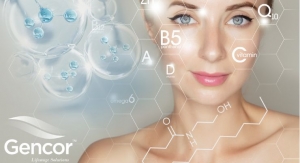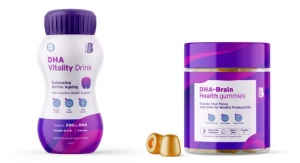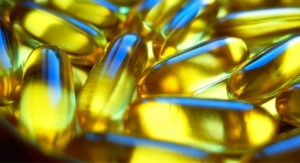By Andrew Dahl, President & CEO, ZIVO Bioscience09.04.18
As interest in naturally sourced nutraceutical and cosmeceutical ingredients steadily increases around the world, manufacturers are paying close attention to algae as a practical source of nutritional and bioactive benefits. Recent advances in extracting bioactive compounds, vitamins, micronutrients, and proteins from algal biomass have made it commercially viable to integrate them into supplements and cosmetic products that can either be ingested or applied topically. The consequence is that this class of seemingly humble organisms turns out to have a surprising amount of power to promote human health and beauty—both from within and without.
Beauty From Within: Nutritional Applications
Algae-based products naturally resonate with consumers in an era when they prioritize enhancing their own beauty from within. As such, all-natural foods as well as nutraceutical products continue to offer special appeal. Further, consumers are reading labels more closely and demanding natural, plant-based ingredients that have a specific purpose and functional benefit. When algae are a part of the mix, consumers can look to a relatively broad range of properties to enhance their well-being.
Interest in algae-based ingredients is driven in part by clinicial studies that have backed up what pioneers in algae development have known for quite some time. Across the spectrum of research disciplines, scientists from private research organizations such as Synthetic Genomics and academic laboratories such as the National Center for Natural Products Research continue to conduct studies to refine and characterize the bioactive constituents in algal biomass, which can be used to develop new formulations that appeal to a broad and expanding consumer base. In particular, the benefits offered by algae-based foods and nutritional supplements may include:
Antioxidant activity: Algal non-starch polysaccharides (NSPs) and carotenoids can function as beneficial active ingredients in products that range from single-ingredient caplets to flavorful food ingredients. These algal-based nutraceuticals may also incorporate collagen, lactoferrin and certain types of flavanols shown to exert potent antioxidant bioactivity in laboratory and clinical settings.
Joint health and systemic inflammation: Certain types of algae have been shown to contain a wealth of vitamins, micronutrients, and minerals—along with naturally occurring, anti-inflammatory small molecular entities (SMEs) that may prove beneficial in tamping down acute and chronic inflammation.
Algae-based food ingredients and supplements can similarly help to mitigate the systemic inflammation caused by highly refined sugars and starches present in processed foods and beverages. These also provide a chemo-protective layer for joints and tendons, helping conserve the presence of glycosaminoglycans in joint tissues, as indicated in groundbreaking explant and ex vivo research.
Stress control and cellular damage: Oxidative stress, involving cellular damage caused by free radicals inside and outside each cell, is familiar to many. In one specific type of algae, the biomass exhibited inhibition of the production of nitric oxide, an important effector molecule. Nitrosative stress, produced when the immune system is activated, can combine with oxidative stress to multiply cellular damage. According to research published in Free Radical Biology and Medicine, quenching both types of free radicals can have important biological effects. Algae may play a role in doing so.
Metabolic health: Algae can also help to optimize the metabolic system. Promoting digestive health and metabolic efficiency may help to change body composition by potentially building muscle rather than storing fat, and by boosting the basal metabolic rate. This can translate to gradual weight loss or to help prevent people from gaining back lost weight.
Beauty From Without: Enhancing Skin Care
In addition to consumer demand for products that promote “beauty from within” via nutraceutical ingredients, customers are also seeking to ensure their health and beauty products provide “beauty from without.” For cosmetic uses, concerns have been raised about synthetic chemistry as a source for active ingredients in various skin care products. There is now a push toward utilizing natural and botanical-based resources that offer the same or similar benefits. One such application is in topical sunscreen products. According to the Environmental Working Group, a common ingredient, oxybenzone, can cause allergic skin reactions (Rodriguez 2006) and it has been shown in laboratory studies that it is a weak estrogen with potent anti-androgenic effects (Krause 2012, Ghazipura 2017).
To satisfy this shift in consumer priorities, natural sunscreens, topical antioxidants, and gentle astringents (in the form of masques, lotions, and solutions) can all be created from algal extracts.
For example, microalgae produce mycosporine-like amino acids that may work like a natural sunscreen, with research demonstrating an ability to protect against damage to DNA and proteins (such as collagen) caused by UV rays and full-spectrum sunlight.
Applied topically, these same amino acids may also protect the skin against desiccation and heat stress. Certain strains of algae may also calm immune and inflammation responses that irritate and redden the skin. Overall, these products present a host of immune-related benefits—and it is likely that further research into the properties of specific algal strains will widen their potential for skin care products.
The types of algae that are capable of producing beneficial effects in food products, nutraceuticals, and cosmeceuticals can be grown in open, freshwater ponds without herbicides or pesticides, relying entirely on the algae’s own robust immune defenses. They are antibiotic-free, non-GMO, dairy-free, soy-free, and hormone-free, and contain no animal products.
After being harvested and dried, they are milled to size, bagged, and shipped to a processing facility for finishing. The dried algal biomass is minimally processed to ensure quality, safety, and consistency. Depending on the application, the dried algae may be naturally flavored, colored, or encapsulated with other natural products.
In sum, algae promise an exciting new range of health and beauty products for the nutraceutical and cosmeceutical markets. Companies focusing on their customers’ needs would do well to take a closer look at the potential of algae—and what these organisms can do for their product offerings and their customers’ expectations.
About the author: Andrew A. Dahl is president and CEO of ZIVO Bioscience, a biotech/agtech research and development company engaged in the commercialization of nutritional and medicinal products derived from proprietary algal strains.
Beauty From Within: Nutritional Applications
Algae-based products naturally resonate with consumers in an era when they prioritize enhancing their own beauty from within. As such, all-natural foods as well as nutraceutical products continue to offer special appeal. Further, consumers are reading labels more closely and demanding natural, plant-based ingredients that have a specific purpose and functional benefit. When algae are a part of the mix, consumers can look to a relatively broad range of properties to enhance their well-being.
Interest in algae-based ingredients is driven in part by clinicial studies that have backed up what pioneers in algae development have known for quite some time. Across the spectrum of research disciplines, scientists from private research organizations such as Synthetic Genomics and academic laboratories such as the National Center for Natural Products Research continue to conduct studies to refine and characterize the bioactive constituents in algal biomass, which can be used to develop new formulations that appeal to a broad and expanding consumer base. In particular, the benefits offered by algae-based foods and nutritional supplements may include:
Antioxidant activity: Algal non-starch polysaccharides (NSPs) and carotenoids can function as beneficial active ingredients in products that range from single-ingredient caplets to flavorful food ingredients. These algal-based nutraceuticals may also incorporate collagen, lactoferrin and certain types of flavanols shown to exert potent antioxidant bioactivity in laboratory and clinical settings.
Joint health and systemic inflammation: Certain types of algae have been shown to contain a wealth of vitamins, micronutrients, and minerals—along with naturally occurring, anti-inflammatory small molecular entities (SMEs) that may prove beneficial in tamping down acute and chronic inflammation.
Algae-based food ingredients and supplements can similarly help to mitigate the systemic inflammation caused by highly refined sugars and starches present in processed foods and beverages. These also provide a chemo-protective layer for joints and tendons, helping conserve the presence of glycosaminoglycans in joint tissues, as indicated in groundbreaking explant and ex vivo research.
Stress control and cellular damage: Oxidative stress, involving cellular damage caused by free radicals inside and outside each cell, is familiar to many. In one specific type of algae, the biomass exhibited inhibition of the production of nitric oxide, an important effector molecule. Nitrosative stress, produced when the immune system is activated, can combine with oxidative stress to multiply cellular damage. According to research published in Free Radical Biology and Medicine, quenching both types of free radicals can have important biological effects. Algae may play a role in doing so.
Metabolic health: Algae can also help to optimize the metabolic system. Promoting digestive health and metabolic efficiency may help to change body composition by potentially building muscle rather than storing fat, and by boosting the basal metabolic rate. This can translate to gradual weight loss or to help prevent people from gaining back lost weight.
Beauty From Without: Enhancing Skin Care
In addition to consumer demand for products that promote “beauty from within” via nutraceutical ingredients, customers are also seeking to ensure their health and beauty products provide “beauty from without.” For cosmetic uses, concerns have been raised about synthetic chemistry as a source for active ingredients in various skin care products. There is now a push toward utilizing natural and botanical-based resources that offer the same or similar benefits. One such application is in topical sunscreen products. According to the Environmental Working Group, a common ingredient, oxybenzone, can cause allergic skin reactions (Rodriguez 2006) and it has been shown in laboratory studies that it is a weak estrogen with potent anti-androgenic effects (Krause 2012, Ghazipura 2017).
To satisfy this shift in consumer priorities, natural sunscreens, topical antioxidants, and gentle astringents (in the form of masques, lotions, and solutions) can all be created from algal extracts.
For example, microalgae produce mycosporine-like amino acids that may work like a natural sunscreen, with research demonstrating an ability to protect against damage to DNA and proteins (such as collagen) caused by UV rays and full-spectrum sunlight.
Applied topically, these same amino acids may also protect the skin against desiccation and heat stress. Certain strains of algae may also calm immune and inflammation responses that irritate and redden the skin. Overall, these products present a host of immune-related benefits—and it is likely that further research into the properties of specific algal strains will widen their potential for skin care products.
The types of algae that are capable of producing beneficial effects in food products, nutraceuticals, and cosmeceuticals can be grown in open, freshwater ponds without herbicides or pesticides, relying entirely on the algae’s own robust immune defenses. They are antibiotic-free, non-GMO, dairy-free, soy-free, and hormone-free, and contain no animal products.
After being harvested and dried, they are milled to size, bagged, and shipped to a processing facility for finishing. The dried algal biomass is minimally processed to ensure quality, safety, and consistency. Depending on the application, the dried algae may be naturally flavored, colored, or encapsulated with other natural products.
In sum, algae promise an exciting new range of health and beauty products for the nutraceutical and cosmeceutical markets. Companies focusing on their customers’ needs would do well to take a closer look at the potential of algae—and what these organisms can do for their product offerings and their customers’ expectations.
About the author: Andrew A. Dahl is president and CEO of ZIVO Bioscience, a biotech/agtech research and development company engaged in the commercialization of nutritional and medicinal products derived from proprietary algal strains.




























